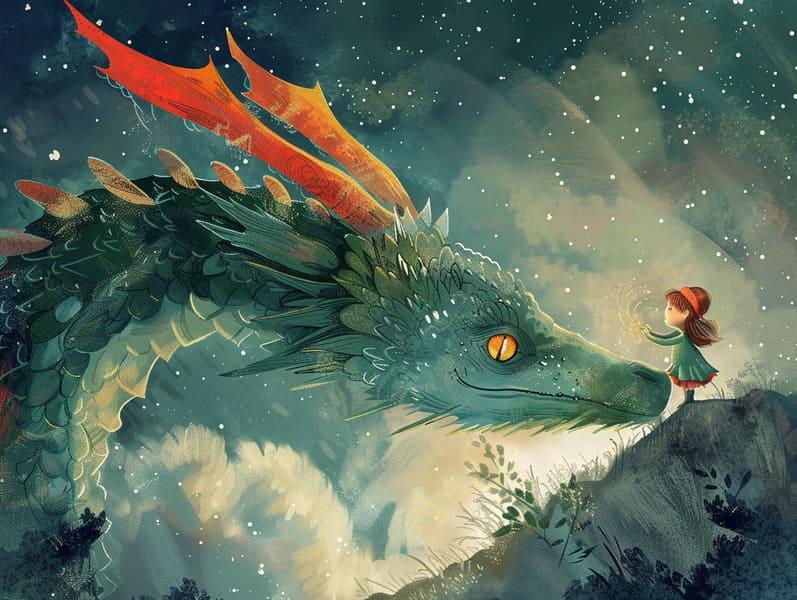The Emergence of Grimm's Fairy Tales and Its Unceasing Grandeur.
The Emergence of Grimm's Fairy Tales and Its Unceasing Grandeur.
Blog Article

Old fairy tales have deep roots. These tales have been transmitted from one generation to the next centuries before they were ever inscribed. They originated from a variety of civilizations, including Western traditions. They were initially passed along among elders, often carrying themes and messages pertaining to the societal norms and beliefs of the time.
The Brothers Grimm, the two Grimm brothers, were among the first to collect and release many of these beloved tales. Their compilation, "Grimm's Story Collection," included classics like "The Little Glass Slipper," "Hansel and Grethel," and "The True Story of Snow White," which have since become essentials in the world of famous fairy tales. Similarly, the Danish author's magical stories, such as "The Mermaid's Tale," and "The Story of the Ugly Duckling," have won hearts worldwide, ensuring their place in the pantheon of famous fairy tales.
Despite their age, classic fairy tales remain as significant as ever, especially as nighttime stories for kids. These whimsical stories are now available in numerous formats, including richly illustrated books, captivating animations, and online fairy tales.
Their lasting presence can be connected to several delightful features:
Key Lessons: Ancient fairy tales often convey important moral lessons. Fairy tales like "The Story of the Boy Who Cried Wolf" teach the importance of truth, while "The Race of the Tortoise and the Hare" illustrate the benefits of resolve and unassuming nature. These narratives offer young ones clear distinctions between ethical and unethical, forming their moral compass in a soft yet lasting way.
Warmth and Understanding: Classic fairy tales frequently illustrate individuals facing problems and hurdles, prompting young listeners to comprehend with their struggles and boost their triumphs. For instance, "Beauty and the Beast" shows us the merit of looking deeper to understand the real person of a individual, promoting tenderness and recognition.
Cultural Awareness: Many timeless fairy tales are rooted in the cultural contexts from which they grew. Exploring these tales can provide intriguing perspectives into different historical contexts, strengthening a sense of international awareness and recognition.
Creativity and Imagination: The supernatural elements in fairy tales—enchanted objects—foster children’s imaginative ideas. These fairy tales carry readers to magical realms, encouraging innovative ideas and a sense of marvel that remains a lifetime.
Traditional fairy tales are not only whimsical but also educational. They serve as charming tools in enhancing various intellectual and emotional capacities in young readers. When classic fairy tales are spoken out loud, they foster speaking abilities by presenting new linguistic elements and intricate sentence structures. This practice also develops listening abilities and mindfulness, as kids focus on every detail, anticipating to see what happens next.
Furthermore, contemplating the themes and characters of ancient fairy tales can cultivate reasoning skills and analytical skills. Children are taught to detect patterns, make predictions, and realize cause and effect. These discussions also encourage little ones utter their thoughts and feelings, boosting their emotional intelligence.
In today’s cyber age, the proliferation of digital storybooks has made these fairy tales more reachable than ever. Online platforms and programs present extensive collections of popular fairy tales that can be viewed or heard anytime, anywhere. Fairy tales read out loud are particularly common, sharing an interactive method for the young to experience these alluring stories. find it here Audiobooks and narrated videos take characters and settings to life, often augmented by enchanting soundtracks and songs that enhance the narrative adventure.
The timeless appeal of timeless fairy tales lies in their ability to adjust to present days while retaining their central messages. Contemporary renditions of these fairy tales often present more inclusive protagonists and modern settings, making them accessible to today’s audience. However, the key lessons of courage, humanity, and righteousness remain unchanged, continuing to resonate with listeners of all ages.
Old fairy tales also offer a sense of assurance and comprehensibility. They offer a orderly narrative with a apparent beginning, middle, and end, often drawing to a close with the culmination of conflicts and the triumph of good over bad. This certainty can be soothing for young ones, delivering a sense of firmness in an shifting world.
Timeless fairy tales continue to mesmerize and train new generations, maintaining their beauty and applicability in modern society. As kids' bedtime tales, they impart upon a perfect blend of charm and understanding, promoting moral values, empathy, and creativity. The presence of online fairy tales and the commonness of fairy tales recited promise that these ancient tales remain accessible to new generations.
By maintaining and relating these fairy tales, we continue to commemorate the rich tapestry of narrative artistry and cultural heritage. Whether you are delving into a artistically illustrated book, perusing a internet collection, or listening on an audio story, the splendor of popular fairy tales is always within reach. These narratives reveal of the unending magic of fairy tales and its ability to link us across epochs and places.
Even if you are experiencing a artistically illustrated book, enjoying a digital library, or listening via an voice book, the majesty of bedtime fairy tales is always within reach.
These tales convey of the continued presence of tales and its ability to bring us together across generations and cultures, forging a link that delights and instructs alike.